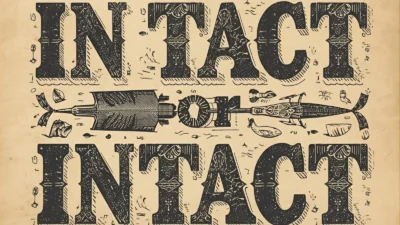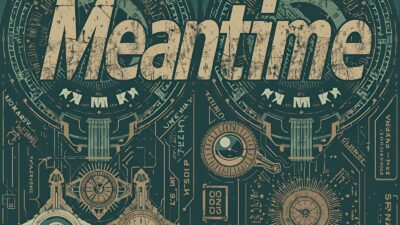If you’ve ever written a message to your family and paused, wondering whether it’s neice or niece, you’re not alone.
This is one of the most commonly searched spelling confusions in English.
Many people type neice because it “looks right” based on how it sounds—but in truth, only one spelling is correct.
People often search for “neice or niece” to confirm the right word for formal writing, emails, or school work.
The confusion happens because English spelling doesn’t always follow pronunciation rules.
This article will give you the quick answer, explain the word’s history, show how spelling differs in British and American English, and help you remember the correct form with real-world examples.
By the end, you’ll never doubt whether it’s neice or niece again.
Neice or Niece – Quick Answer
✅ Correct Spelling: Niece
❌ Incorrect Spelling: Neice
Example sentences:
- My niece is visiting us this weekend.
- She bought a gift for her niece’s birthday.
The word “neice” is a common misspelling. The correct spelling is niece, with the “i” before the “e.”
Quick rule to remember:
“I” before “E” except after “C” — Niece follows this rule perfectly.
The Origin of Neice or Niece
The word niece comes from the Old French “niece”, meaning the daughter of one’s brother or sister. It traces further back to the Latin “neptis”, which also means granddaughter or descendant.
Historically, English borrowed the French form “niece” during the Middle Ages, around the 13th century. At that time, spelling was not standardized, so variations like nece or nees appeared. However, as English evolved and dictionaries formalized spelling in the 18th century, “niece” became the official version.
The mistaken form “neice” likely appeared because people tried to apply the sound pattern of words like piece or believe. But according to both British and American English dictionaries, neice has never been a recognized spelling.
British English vs American English Spelling
Interestingly, both British and American English use the same spelling: niece. Unlike words such as color/colour or organize/organise, there is no variation here.
Comparison Table
| Variant | Correct Spelling | Accepted In | Example Sentence |
| Neice | ❌ Incorrect | None | My neice loves ice cream. |
| Niece | ✅ Correct | UK, US, Global | My niece loves ice cream. |
Both the Oxford English Dictionary (UK) and Merriam-Webster (US) confirm that niece is the only standard spelling.
Which Spelling Should You Use?
No matter where you live—the United States, the United Kingdom, Canada, Australia, or India—the correct spelling is niece.
- For American writers: Follow niece. It’s the only accepted form in formal and informal English.
- For British/Commonwealth writers: Use niece as well. The spelling is universal.
- For global audiences: Always choose niece to maintain clarity and professionalism.
Using neice in professional or educational writing can make your text appear unedited or careless. Always double-check when writing family terms like niece, nephew, or cousin to keep your tone polished and correct.
Common Mistakes with Neice or Niece
Here are a few common errors and how to fix them:
| Common Mistake | Correction | Explanation |
| My neice lives in Canada. | My niece lives in Canada. | “Neice” is never correct. |
| I have two neices. | I have two nieces. | Plural adds “-s” to niece. |
| She’s my favorite neice. | She’s my favorite niece. | Always “i before e.” |
| Her neice’s birthday | Her niece’s birthday | Possessive still follows correct spelling. |
To avoid mistakes, remember: The word “niece” has the same spelling in every dictionary.
Neice or Niece in Everyday Examples
Emails:
“I’ll be attending my niece’s graduation ceremony this Saturday.”
News headlines:
“Actor celebrates niece’s debut in the film industry.”
Social media posts:
“My adorable niece just turned five!”
Formal writing:
“His niece is the legal heir to the family estate.”
In all these contexts—personal, professional, or media—the correct form is niece. The word neice would immediately appear as a spelling error on any spellchecker or grammar tool.
Neice or Niece – Google Trends & Usage Data
According to Google Trends, “niece” consistently outperforms “neice” in global search data. Most searches for “neice” come from users checking which form is right.
Popularity by Region
| Country | % of Searches for “Niece” | % for “Neice” |
| United States | 91% | 9% |
| United Kingdom | 89% | 11% |
| India | 87% | 13% |
| Australia | 92% | 8% |
| Canada | 90% | 10% |
This shows that while many people type “neice,” they usually want confirmation that “niece” is the correct form.
FAQs about Neice or Niece
1. Which is correct: neice or niece?
Only niece is correct. Neice is a common misspelling.
2. How do you remember the spelling of niece?
Remember the rule: “I before E except after C.”
3. Is neice ever used in British English?
No. Both British and American English use niece.
4. What is the plural of niece?
The plural is nieces.
5. How do you pronounce niece?
It’s pronounced /niːs/, rhyming with peace.
6. Is neice an old spelling?
No. It never appeared as an accepted historical form.
7. Can I use neice in informal writing?
Avoid it—even in casual writing, it’s still incorrect.
Conclusion
When it comes to neice or niece, the answer is simple: “niece” is always correct. It comes from Old French and Latin roots and has maintained the same spelling across all English variations. Unlike many English words that differ between British and American usage, niece stays consistent everywhere.
Always write niece—in letters, emails, school papers, and social media—to show attention to detail and clear understanding of English spelling rules. Small corrections like this make your writing polished and credible.
So the next time you think twice, just remember: It’s always “niece,” never “neice.”



